Amethyst Woodstar
Amethyst Woodstar (Calliphlox amethystina)
Name Origin:
From Greek kallos (“beautiful”) and phlox (“flame”), referring to the bird’s glowing plumage. The species name amethystina means “amethyst-colored,” describing the male’s brilliant violet throat.
Quick Facts
🪶 Length: 6.5–8 cm (2.6–3.1 in)
⚖️ Weight: 2.5–3 g (0.09–0.11 oz)
🌎 Range: Eastern and southern Brazil, Paraguay, northern Argentina, Bolivia, Peru, and parts of Venezuela and the Guianas
🧭 Elevation: Up to 1,200 m (3,940 ft)
🌸 Diet: Nectar and small insects
🏡 Habitat: Open woodlands, forest edges, savannas, and gardens
🧬 Clade: Mellisugini — “Bees” (Bee Hummingbird tribe)
📊 Status: Least Concern (IUCN)
Subspecies & Distribution
Monotypic species — no recognized subspecies.
Distribution: Widespread across tropical and subtropical South America, from Venezuela and the Guianas south through Brazil, Bolivia, Paraguay, and northern Argentina.
Species Overview
A delicate and radiant gem of South America, the Amethyst Woodstar is one of the smallest hummingbirds on the continent. It shimmers through open forests, savannas, and gardens, where males flash their dazzling amethyst throats in sunlight. Measuring just seven centimeters, it is both fragile and fierce—tiny yet territorial, fast yet poised in flight.
Male Description:
The male is unmistakable, with iridescent green upperparts and a brilliant amethyst-violet gorget separated from the white underparts by a thin green breast band. His short, deeply forked tail is purplish-black, and his straight black bill is slender. During courtship displays, males hover in wide arcs, producing sharp metallic trills with their wings.
Female Description:
The female lacks the bright throat patch but has green upperparts, a buffy-white throat, and cinnamon or rufous flanks. Her tail is shorter and rounded, with white-tipped outer feathers. Though subtler in appearance, she shares the same darting flight and active feeding style.
Habitat & Behavior:
The Amethyst Woodstar inhabits open forests, forest edges, and flowering gardens, often frequenting small trees and shrubs. It feeds on nectar from native and ornamental blooms and supplements its diet with small insects. Despite its tiny size, it aggressively defends preferred feeding spots and performs rapid, looping chases around competitors.
Conservation Note:
Currently assessed as Least Concern by the IUCN, the Amethyst Woodstar has a broad range and stable populations. Its adaptability to semi-open and human-modified habitats, such as gardens and orchards, contributes to its resilience. Ongoing habitat preservation and maintenance of native flowering plants ensure the continued success of this miniature marvel.
taken in Brazil
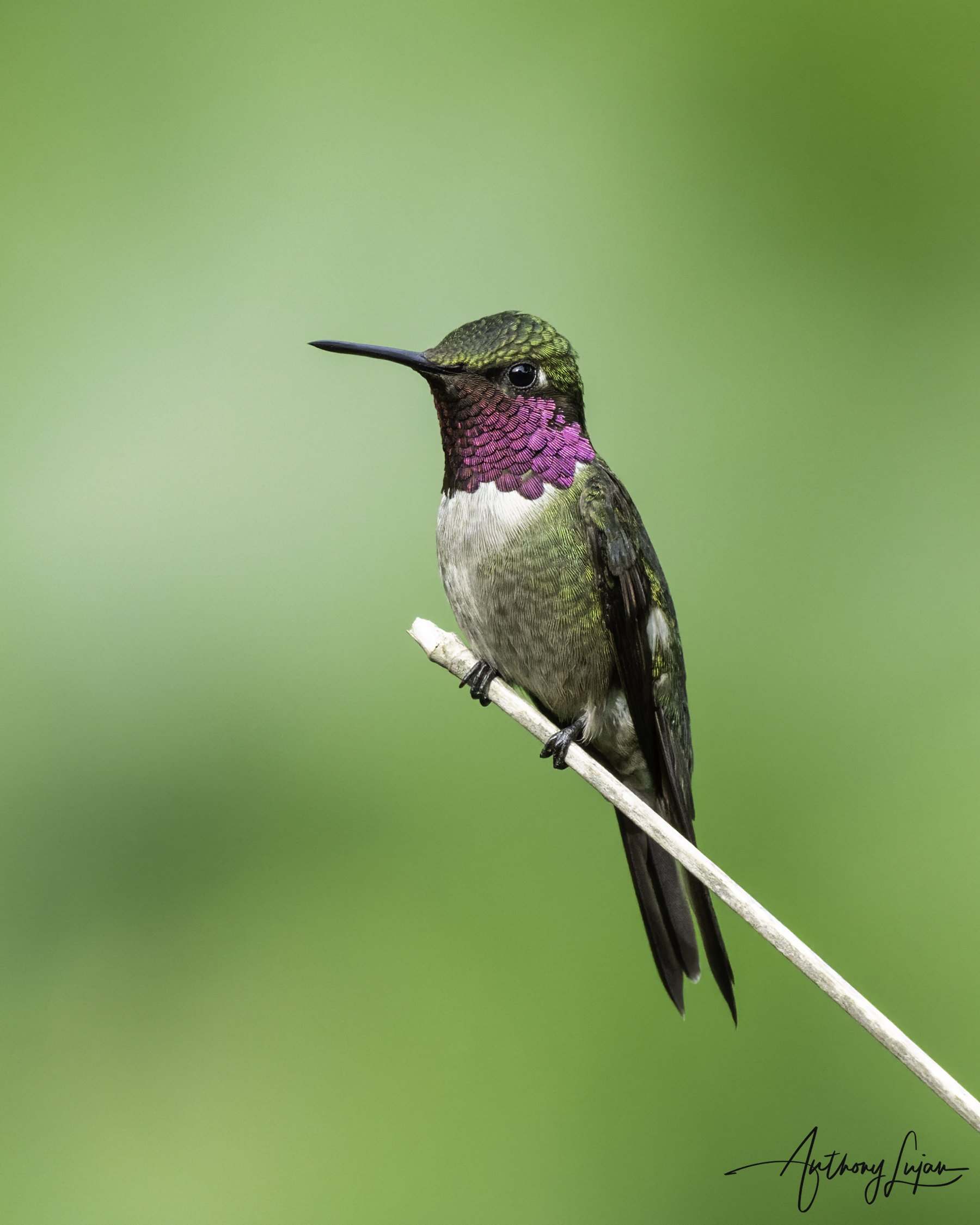
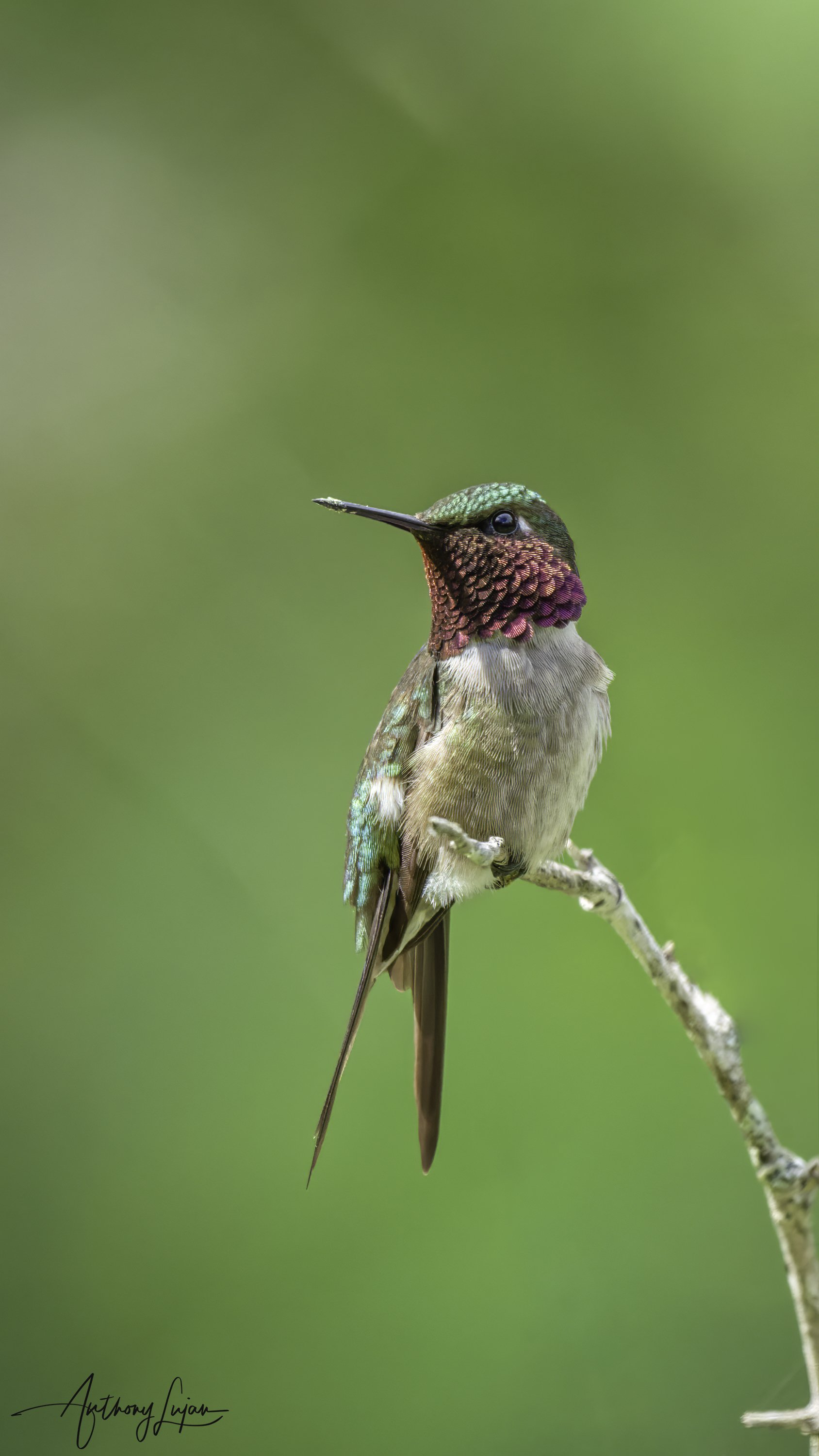
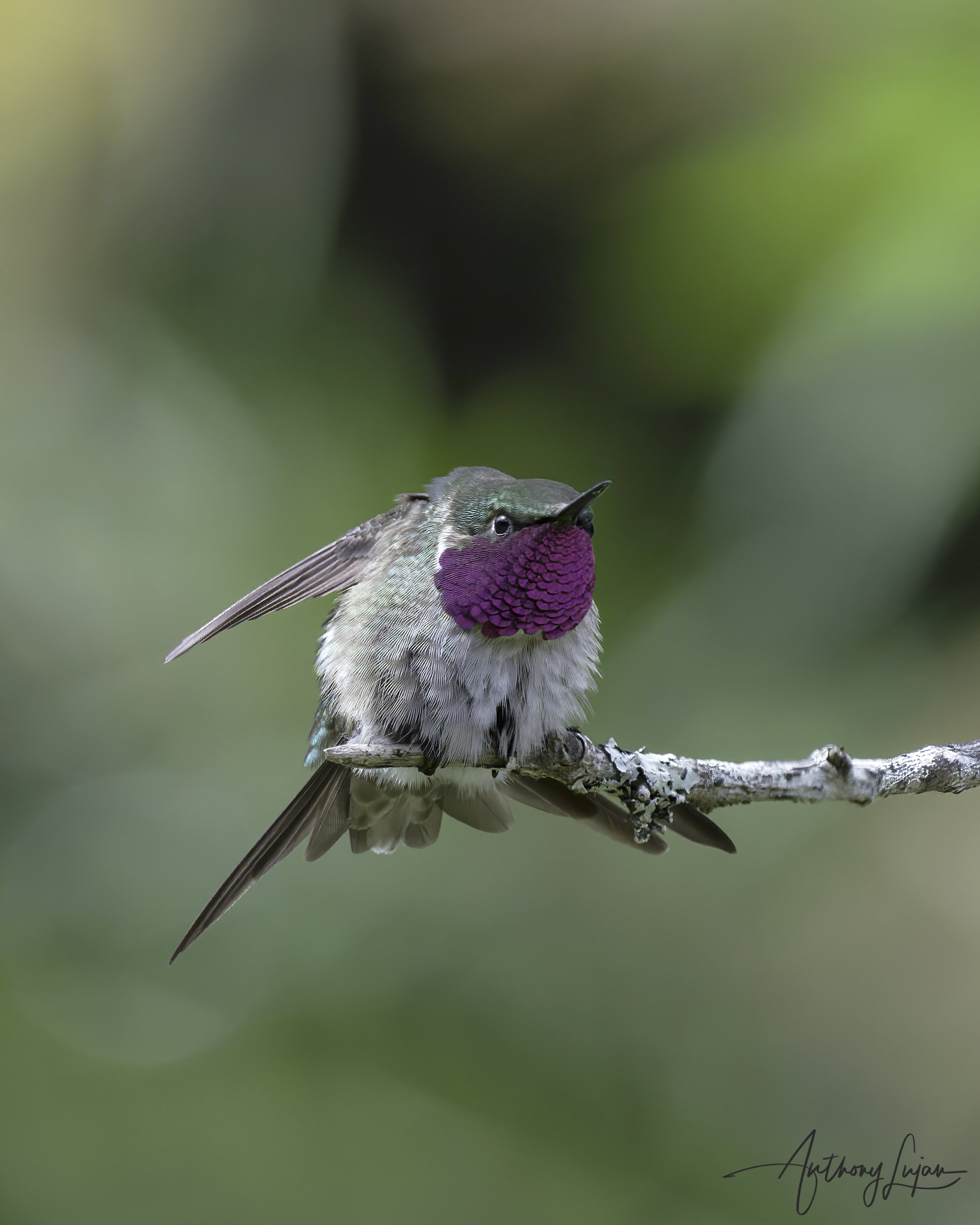
taken in Peru
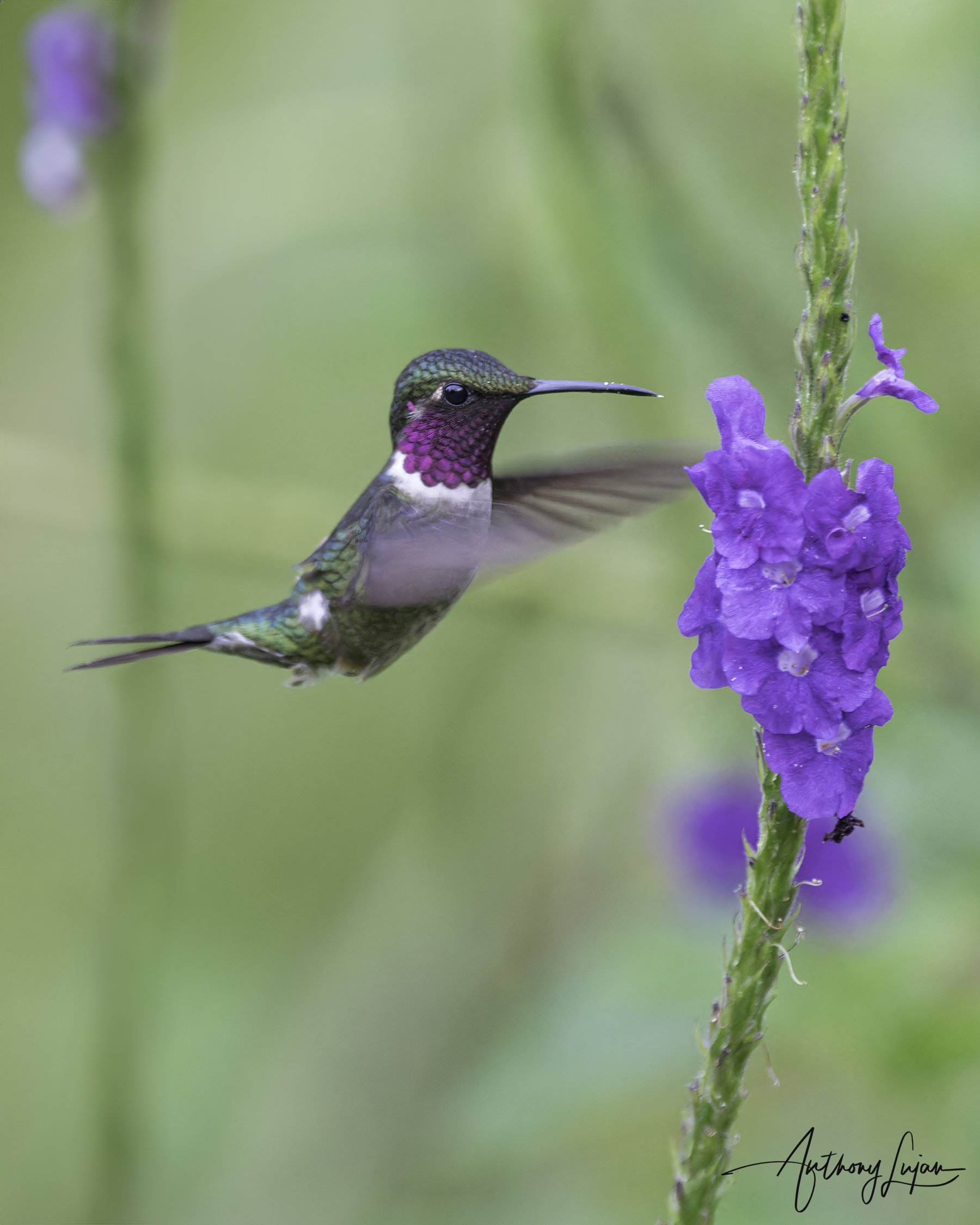
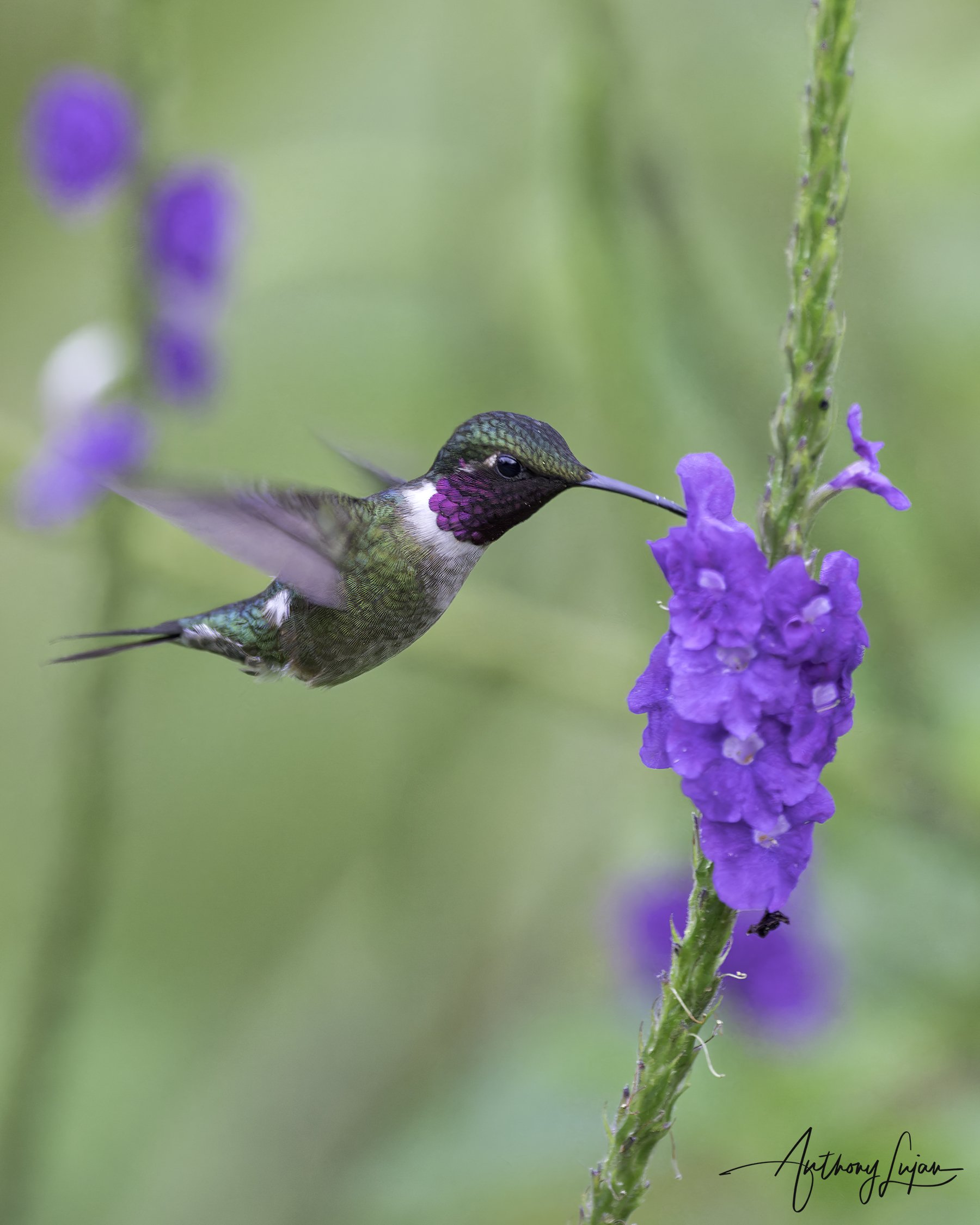
Checkout Anthony’s playlist of this species! Click the top right dropdown to see all the videos.

